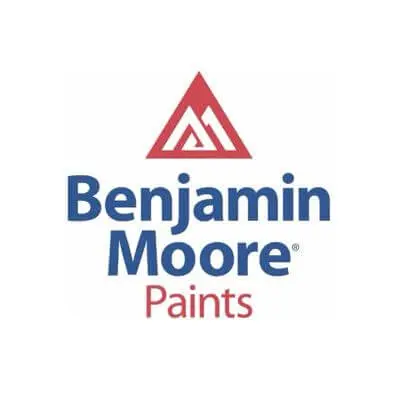Top 10 Professional Lake Oswego House Painters

Key Features:
Significance of Professional House Painting:
Protects against weather elements, such as moisture and sun damage, and prevents pest infestations.
Extends the longevity of building materials, ensuring the home remains structurally sound and visually appealing.
Economic Advantages of Repainting vs. Buying New:
Repainting is a cost-effective solution to enhance a home's curb appeal and functionality compared to the high costs associated with purchasing and relocating to a new property.
Increases market value and personalizes the living space to reflect the homeowner's style.
Choosing the Right Lake Oswego House Painter:
Importance of selecting experienced and reputable painters who specialize in luxury exterior repaints and understand local climate impacts on paint performance.
The necessity of thorough consultation and transparent pricing to comprehend the project scope and costs.
Quality of Paint and Material Selection:
Use of high-quality, durable paints like Sherwin Williams' Duration and Benjamin Moore's Aura for long-lasting results and aesthetic appeal.
Consideration of color trends and personal preferences to enhance the architectural style and character of the home.
Top Professional Painters in Lake Oswego:
Listing of top painting companies known for their craftsmanship, quality materials, and client satisfaction, showcasing Lightmen Painting's position among them.
Emphasis on the painters' expertise in adapting to local environmental conditions and their commitment to delivering superior finishes.
Top Painting Companies in Lake Oswego
In the scenic city of Lake Oswego, where the beauty of the environment is mirrored by the homes within it, professional house painting plays a pivotal role in both aesthetics and preservation. Let’s delve into the significance of house painting in this locale, examining how it goes beyond mere visual appeal to become an essential aspect of home maintenance.
Preserving Your Home's Integrity
In Lake Oswego, the need for exterior house painting transcends the desire for curb appeal. The city's climate and natural setting, while offering stunning views and a tranquil lifestyle, also pose challenges to the longevity of home exteriors. Here are key reasons why professional house painting is crucial:
- Weather Protection: The varying weather conditions in Lake Oswego, from sunny days to rainy seasons, can take a toll on exterior surfaces. Regular painting acts as a barrier, protecting your home from moisture intrusion, sun damage, and temperature fluctuations.
- Pest Prevention: Wood structures are particularly vulnerable to pests like termites and carpenter ants. A fresh coat of paint can seal off potential entry points, reducing the risk of infestations that could compromise the structural integrity of your home.
- Longevity of Materials: Paint serves as a protective layer that extends the life of siding, trim, and other exterior materials. By preventing rot and decay, painting ensures these components continue to support and beautify the structure for years to come.
1. Lightmen Painting
3. JK Painting
5. ESP Painting
10. Da-Vinci Painting and Construction
Economic Considerations: Renovate or Relocate?
The decision between investing in a luxury exterior repaint and buying a new property is a significant economic debate for Lake Oswego homeowners. Here’s how professional painting factors into this decision:
- Cost-Effectiveness: Compared to the expenses associated with purchasing a new home, painting is a cost-effective way to refresh and revitalize your property’s appearance and functionality.
- Value Enhancement: A professional exterior paint job can significantly increase your home's market value, making it a wise investment for those considering future resale.
- Personalization: Painting allows homeowners to customize their property’s exterior to their taste, something that isn’t always possible with a new purchase.
Selecting the Right Professionals
With the critical role of painting in maintaining and enhancing Lake Oswego homes, selecting the right professional painters is paramount. When considering house painters, focus on:
- Experience and Reputation: Look for painters with a proven track record in Lake Oswego, known for their quality workmanship and reliability.
- Specialization: Choose professionals who specialize in luxury exterior repaints, understanding the nuances and requirements of high-end properties.
- Consultation and Transparency: Opt for companies that offer thorough consultations and transparent pricing, ensuring you understand and agree with the project scope and costs.
In Our Experience
"Well we most definitely are bias on this one. The most important quality that sets Lightmen Painting apart from others is we care. We show that by not leaving until your happy with our work. That said, we live in reality and know that we are just one of the premier painting companies in the Lake Oswego area. We've set up a website to showcase those other painting companies in Lake Oswego that shine as we do our best to."
Enhancing Aesthetic Appeal and Property Value
Enhancing the aesthetic appeal and property value of your home in Lake Oswego through a luxury exterior repaint is a significant undertaking that requires careful planning and execution. With the right approach and professionals, this investment can transform your property, providing both immediate enjoyment and long-term financial benefits.
Selecting the Right Lake Oswego House Painter
The success of your exterior repaint largely depends on the skill and expertise of the house painter you choose. Here’s how to ensure you select the right professional for the job:
- Experience and Expertise: Look for a painter with extensive experience in luxury exterior painting projects. Their understanding of the nuances involved in such jobs ensures a high-quality finish.
- Reputation: Research and consider painters with positive feedback and a solid reputation in the Lake Oswego area. Testimonials, online reviews, and before-and-after galleries can provide insights into their work quality and customer satisfaction.
- Professionalism: Choose a painter who demonstrates professionalism, from timely communication to a structured quotation process, ensuring a reliable and transparent working relationship.
Color and Material Selection
The aesthetic impact of your exterior repaint significantly hinges on color and material choices. Here are factors to consider:
- Harmony with Architectural Style: The colors should complement the architectural features of your home, enhancing its inherent beauty. A professional painter can provide valuable advice on color schemes that suit your home’s style and character.
- Quality of Materials: Investing in high-quality, durable paints and materials is crucial for a luxury finish that lasts. Premium water-based paints, for instance, offer excellent durability, aesthetic appeal, and environmental benefits.
- Color Trends and Personal Preference: While staying informed of current color trends can provide inspiration, your personal preference should play a central role in the selection process. The chosen colors should resonate with your taste and the ambiance you wish to create.
Proud Partner Of:


The Economic Perspective: Buying New vs. Renovating
The decision between buying a new property and renovating the existing one, particularly through a luxury exterior repaint, is a significant economic consideration for homeowners. Let's delve into the cost-effectiveness of repainting and its benefits regarding longevity and sustainability.
Cost-Effectiveness of Repainting
- Financial Savings: Renovating, especially exterior painting, is generally less expensive than the costs associated with purchasing a new home, which includes the sale price, real estate fees, moving costs, and potential renovations in the new property.
- Immediate Value Increase: A professional repaint can instantly elevate the aesthetic appeal of your home, thus increasing its market value. This is particularly beneficial if considering selling in the future, as a well-maintained exterior can make a property more attractive to potential buyers.
- Customization: Repainting allows for personalization of your living space to reflect your style and preferences without the need for a full-scale relocation or new property purchase.
Longevity and Sustainability
- Extended Durability: High-quality painting services, particularly from experienced Lake Oswego House Painters, provide a durable finish that can protect your home from environmental elements, reducing the need for frequent touch-ups and prolonging the life of the siding and trim.
- Environmental Impact: Opting to repaint rather than relocate minimizes the environmental footprint associated with building new structures. By maintaining and improving what you already have, you contribute to sustainability by reducing waste and the demand for new construction materials.
- Maintenance and Preservation: Regularly repainting your home as part of its maintenance routine can prevent significant deterioration, such as wood rot or structural damage caused by moisture penetration, thus maintaining the integrity and longevity of your property.
Top 10 Professional Lake Oswego House Painters
Selecting from the top 10 professional Painters In Lake Oswego means entrusting your home's transformation to those who excel in the art of luxury exterior repaints. These esteemed painters are recognized for their craftsmanship, attention to detail, and unwavering commitment to quality, standing out in a market rich with talent.
Excellence in Lake Oswego House Painting
The crème de la crème of Lake Oswego House Painters are distinguished by their ability to consistently deliver outstanding results. Their expertise encompasses:
- Adaptation to Local Conditions: They possess a deep understanding of Lake Oswego’s climate and environmental factors, which play a crucial role in how paint performs and endures over time.
- Quality Materials and Techniques: Top painters use premium paints and state-of-the-art techniques to ensure a finish that is not only beautiful but also resilient and long-lasting.
- Customer Satisfaction: A reputation for reliability and exceeding client expectations is a hallmark of the best painters in the area.
Conclusion: The Art and Economics of House Painting in Lake Oswego
Opting for a luxury exterior repaint by a skilled Lake Oswego House Painter is an investment in your property's aesthetic and structural integrity. This decision marries the art of transforming homes into eye-catching masterpieces with the economics of enhancing property value and longevity. The top Painters In Lake Oswego are not just service providers; they are partners in maintaining and elevating the quality and worth of your home. Through their expertise, homeowners can navigate the dual objectives of aesthetic enhancement and economical upkeep, ensuring that their dwellings stand out in both beauty and value.
Do You Have Questions? Give Us A Call With Any & All! 503-389-5758
SUBSCRIBE TO OUR BLOG: Stay informed with the latest in Painting and DIY projects by subscribing to Lightmen Painting. Get insights, tips, and more delivered straight to your inbox. We would also love to know what you would like to read about, leave thoughts on where we should go next. Interests, Topics, Ideas, all are welcome.
Get $3000 in assistant credits from Magic.com
^ Click Our Logo Above ^
If your in the Portland, Or. area and need advice or a free no obligation estimate call us at 503-389-5758 or email scheduling@lightmenpainting.com
Shout Out:
Celebrating Kijiji: Your Marketplace for Affordable Painting Services
From the team at Lightmen Painting, we extend our highest praise to Kijiji for being a trusted platform where homeowners in Ontario can find affordable and professional painting services. Just as we strive for excellence in our painting solutions, Kijiji helps connect clients with skilled painters who deliver quality results at competitive prices. Their commitment to facilitating great value and service aligns perfectly with our mission to enhance and beautify every home.
Thanks for stopping by Lightmen Daily! Stay tuned for more practical tips and expert advice on making your painting projects flawless, from wall to floor!
Lightmen Painting Serving: Portland, Tigard, Lake Oswego, Tualatin, West Linn, Milwaukie, Sherwood, Happy Valley, Oregon City, Beaverton, Hillsboro, Gresham -Trade Partners-

